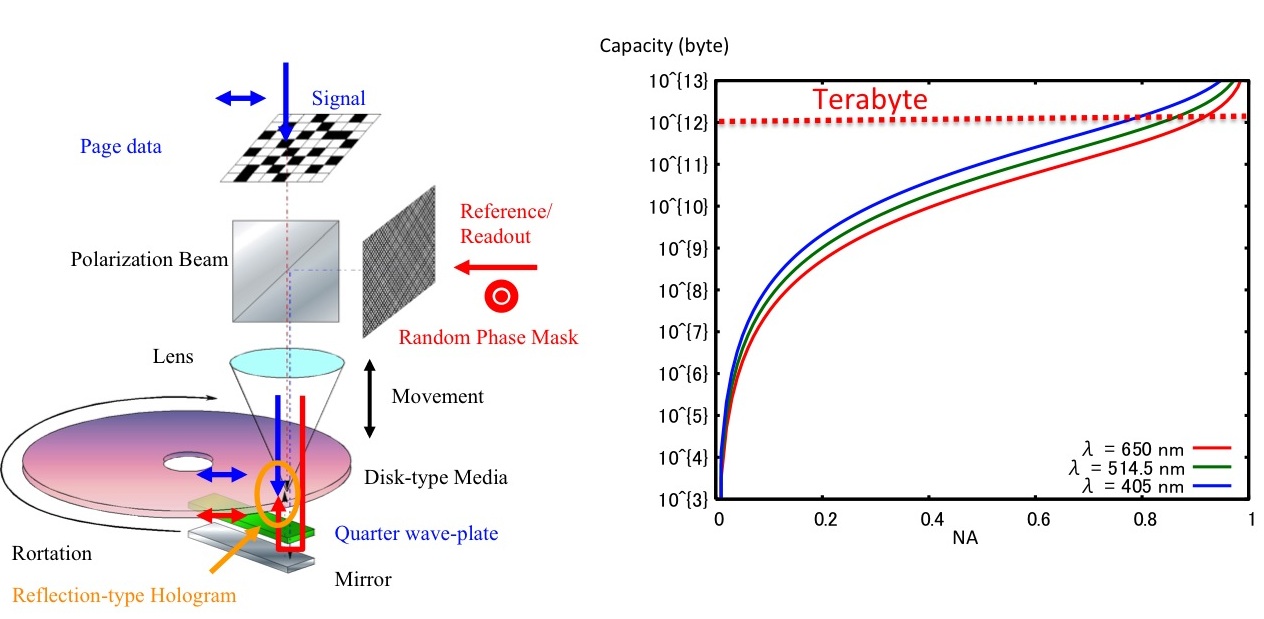Terabyte data sotrage for archival applications
Recently, the amount of digital data have been increasing rapidly by highly developing digital information devices and network. For archival data storage, more high data capacity and fast data transfer rate are required as well as the life time of the storage media. Optical disk memory attracted much attention because of strongness for disaster such as flood and low total cost for long time storage such as 20 to 30 years. We have been developing a reflection-type holographic data storage by using three-dimensional speckle shift multiplexing. This proposed system has a potential to increase the storage capcity with more than 1 terabyte in a 12 cm disk with 0.5 mm thickness. We have developed a simulator to evaluate the holographic data storage and have many strategy to increase the capacity.
【Patents from Kobe University】

[Publication list of recent papers]
[1] Tatsuya Nishizaki, Kouichi Nitta, and Osamu Matoba*, "Available Number of Multiplexing based on SNR Analysis in Reflection-type Holographic Memory using Three-dimensional Speckle-shift Multiplexing," Applied Optics, Vol. 53, No. 25, 5733-5739 (2014).
[2] N. Kinoshita, T. Muroi**, N. Ishii**, K. Kamijo**, H. Kikuchi**, N. Shimidzu**, and O. Matoba, "Half-data-page insertion method for increasing recording density in angular multiplexing holographic memory," Applied Optics 50, No. 16, ppp.2361-2369 (2011).
[3] M. Miura, K. Nitta, and O. Matoba, "Numerical estimation of storage capacity in reflection-type holographic disk memory with three-dimensional speckle-shift multiplexing," JOSA A Vol. 26, Iss. 10, pp. 2269-2274 (2009).
[4] Y. Yonetani, K. Nitta, and O. Matoba, "Numerical evaluation of angular multiplexing in reflection-type holographic data storage in photopolymer with shrinkage," Applied Optics, Vol. 49, No.4, pp.694-700 (2010).
